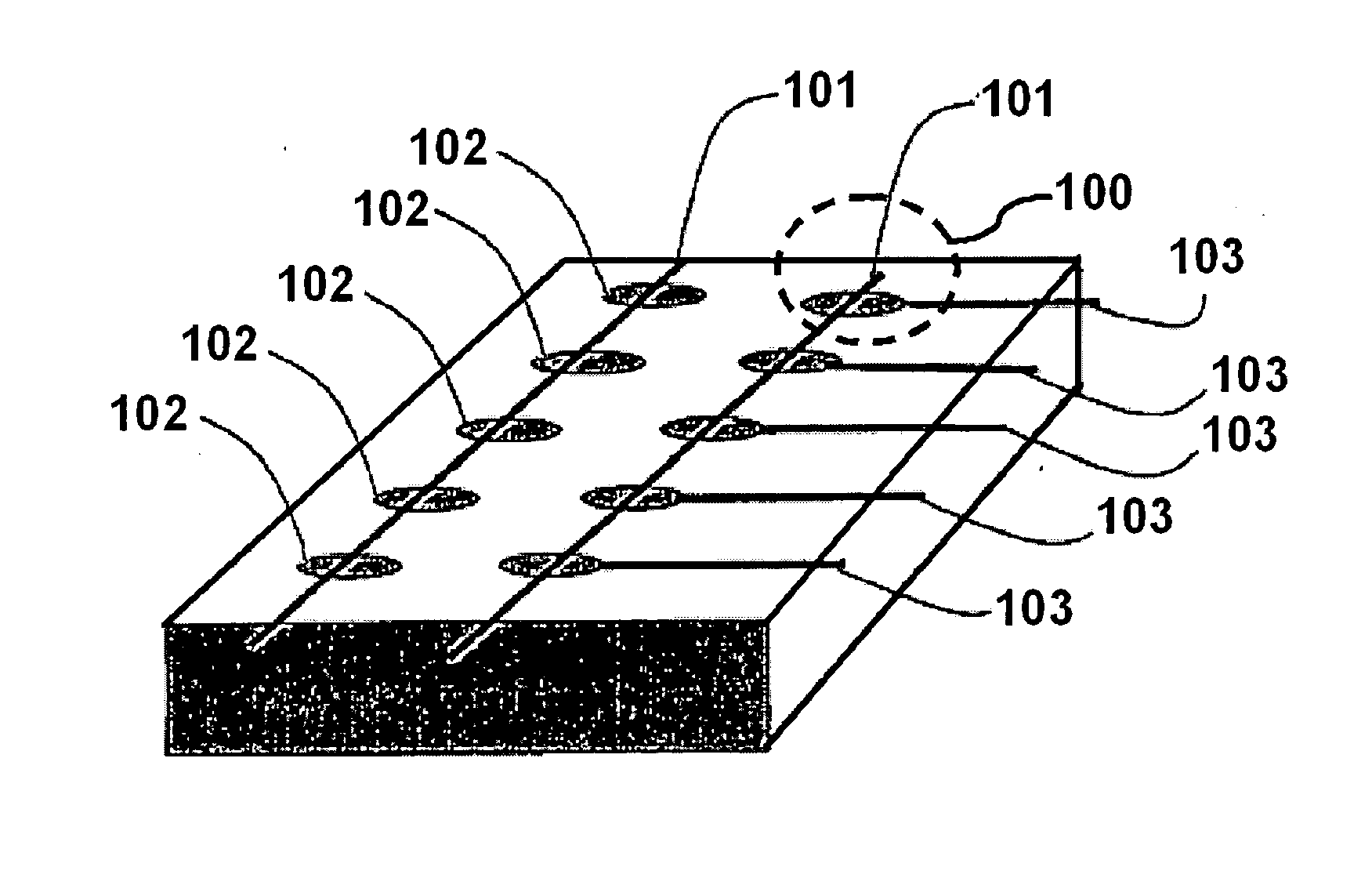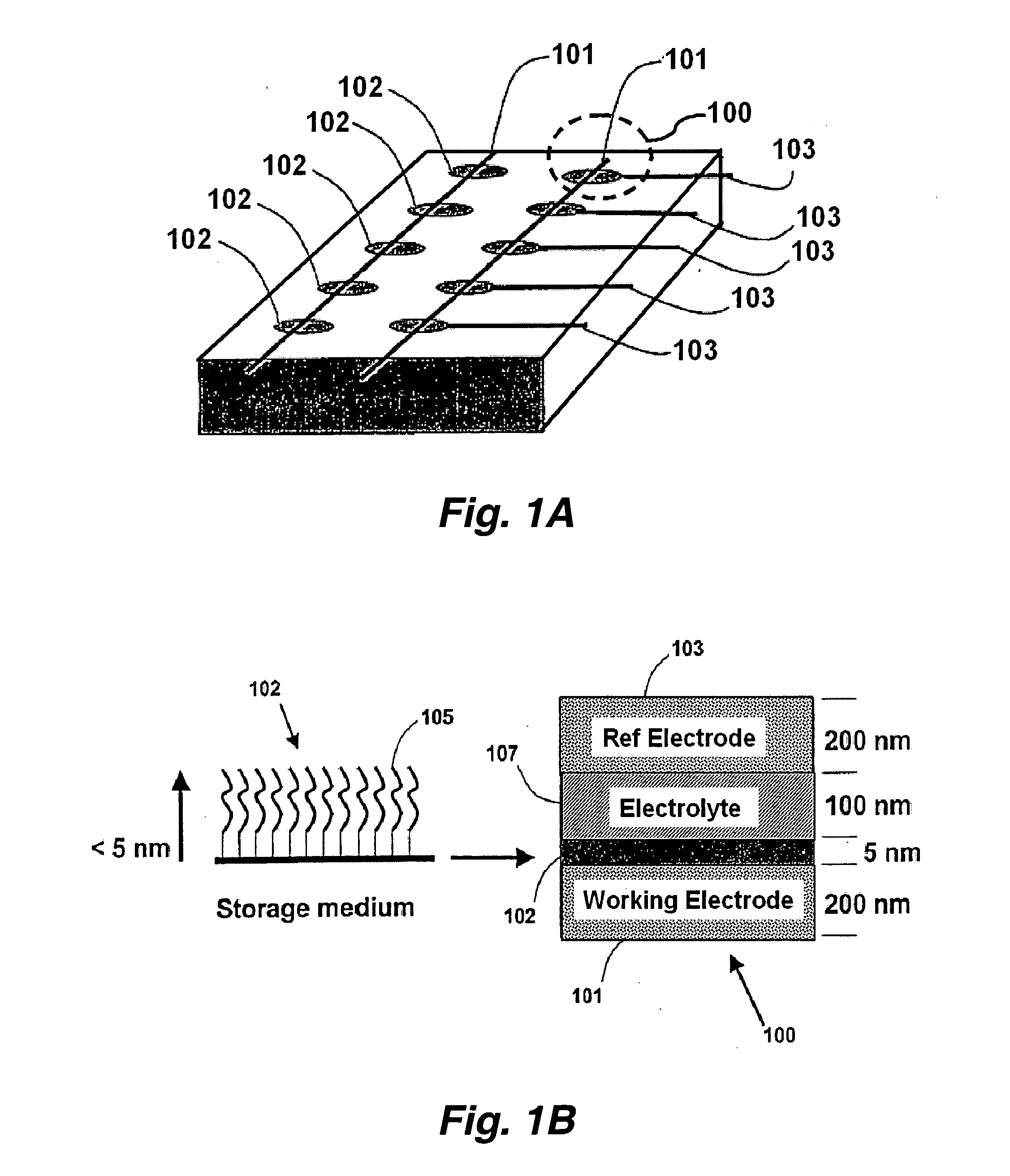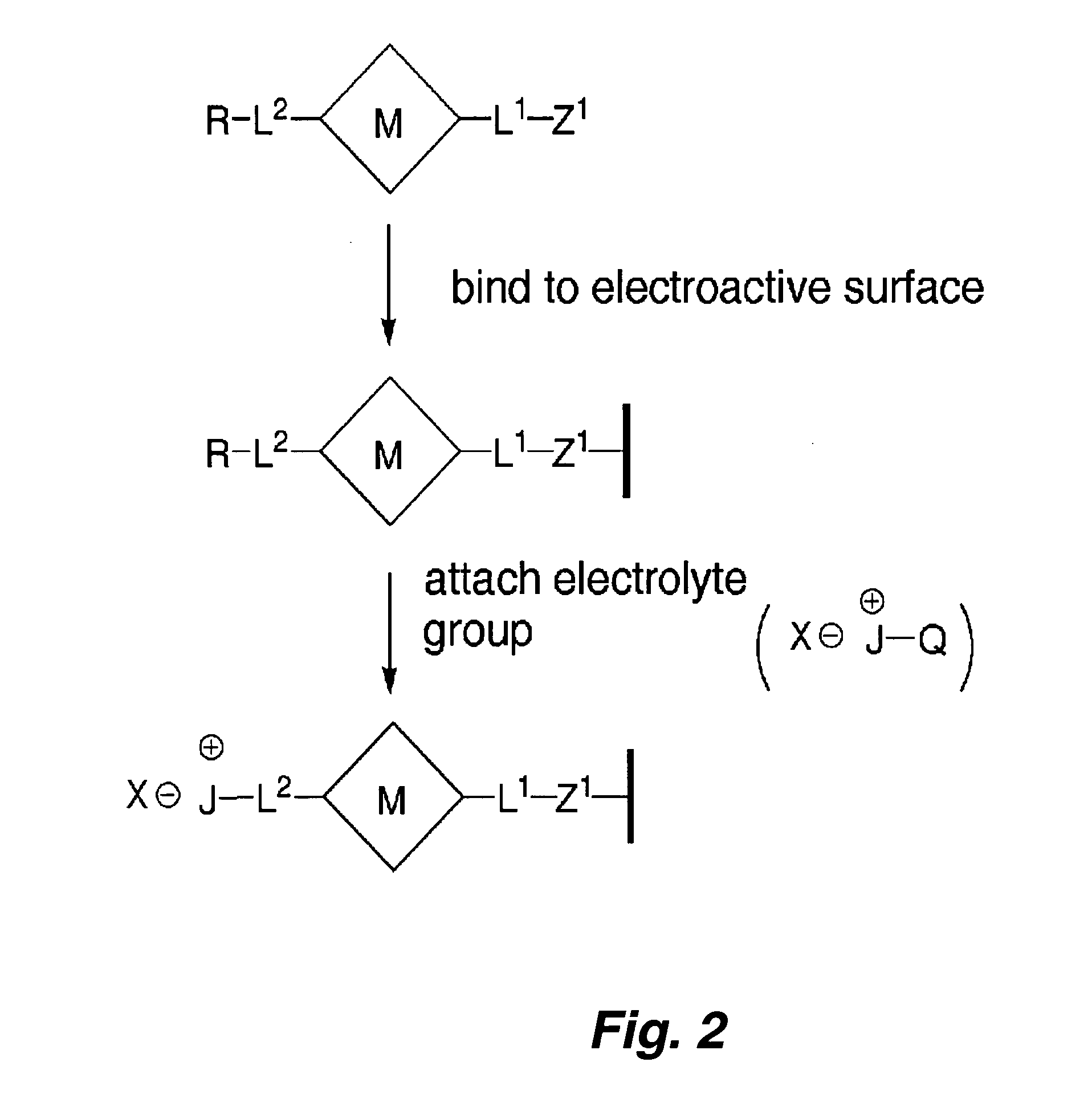Situ patterning of electrolyte for molecular information storage devices
- Summary
- Abstract
- Description
- Claims
- Application Information
AI Technical Summary
Benefits of technology
Problems solved by technology
Method used
Image
Examples
example 1
[0152] One first example of the stepwise fabrication strategy is shown in Scheme 4 (FIG. 8). A free base dipyrrin bearing a benzyl alcohol unit is reacted at high concentration and high temperature to give attachment to a semiconductor surface such as silicon or germanium (see, e.g., copending application U.S. Ser. No. 10 / 040,059, filed on Oct. 16, 2001). Copper acetate is then added, forming the copper-dipyrrin adduct. A triple decker sandwich coordination compound (see, e.g, U.S. Pat. Nos. 6,451,942, 6,212,093, and 6,272,038) bearing a free base dipyrrin is then added to give assembly of the bis(dipyrrinato)copper(II) complex. Bis(dipyrrinato) metal complexes form readily upon exposure of the free base dipyrrin to a metal acetate (see, e.g., Brückner et al. (1996) Can. J. Chem. 74: 2182-2193). The triple decker affords four cationic states and thus is well suited for multibit information storage. The triple decker also bears a benzaldehyde substituent, which can be derivatized in ...
example 2
[0154] A second example of the stepwise fabrication strategy is shown in Scheme 5 (FIG. 9). An oxide surface (e.g., zirconium oxide, silicon dioxide, titanium dioxide) is treated with 4-(dihydroxyphosphoryl)benzaldehyde, achieving attachment under mild conditions (Vermeulen (1997) Prog. Inorg. Chem., 44: 143-166; Katz (1994) Chem. Mater., 6: 2227-2232). Then a ferrocene-zinc porphyrin bearing an acid hydrazide and a free base dipyrrin is exposed to the surface, affording the corresponding hydrazone. The ferrocene-zinc porphyrin affords three cationic states and thus is well suited for multibit information storage. Ferrocene-zinc porphyrin building blocks approaching this level of complexity have been prepared (Gryko, et al. (2000) J. Org. Chem., 65: 7356-7362). A metal reagent such as zinc acetate is then added, followed by a free base dipyrrin bearing two charged groups and an aniline substituent. The bis(dipyrrinato)zinc(II) species forms readily. The aniline unit is then derivati...
example 3
[0155] A third example of the stepwise fabrication strategy is shown in Scheme 6 (FIG. 10). A free base dipyrrin bearing an S-acetylthio group is exposed to a metal surface (e.g., Au). The S-acetyl group is removed in situ (Tour et al. (1995) J. Am. Chem. Soc., 117: 9529-9534; Gryko et al. (1999) J. Org. Chem., 64: 8635-8647). The surface is treated with copper acetate followed by a triple decker dyad bearing a free base dipyrrin and a formyl-substituted diphenylethyne linker. The triple decker dyad affords seven cationic states and thus is well suited for multibit information storage. Triple-decker dyads having this level of complexity have been prepared (Schweikart et al. (2002) J. Mater. Chem. 12: 808-828). The bis(dipyrrinato)copper(II) species forms readily. The carboxaldehyde is then derivatized with a p-(trimethylsilyloxy) substituted Girard's reagent P. The trimethylsilyl group is removed upon treatment with a fluoride reagent under mild conditions. The linker to the counter...
PUM
 Login to View More
Login to View More Abstract
Description
Claims
Application Information
 Login to View More
Login to View More - R&D
- Intellectual Property
- Life Sciences
- Materials
- Tech Scout
- Unparalleled Data Quality
- Higher Quality Content
- 60% Fewer Hallucinations
Browse by: Latest US Patents, China's latest patents, Technical Efficacy Thesaurus, Application Domain, Technology Topic, Popular Technical Reports.
© 2025 PatSnap. All rights reserved.Legal|Privacy policy|Modern Slavery Act Transparency Statement|Sitemap|About US| Contact US: help@patsnap.com



